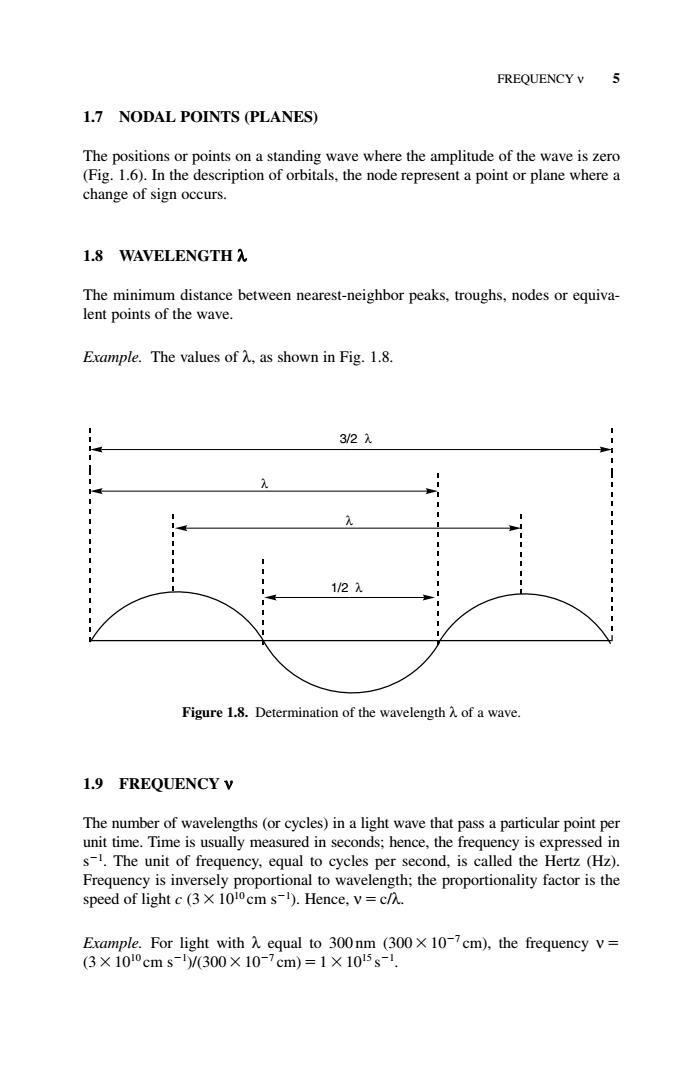正在加载图片...

FREQUENCY 5 1.7 NODAL POINTS (PLANES) The positions or points on a standing wave where the amplitude of the wave is zero (Fig.1.6).In the description of orbitals,the node represent a point or plane where a change of sign occurs. 1.8 WAVELENGTH The minimum distance between nearest-neighbor peaks,troughs,nodes or equiva- lent points of the wave. Example..The values of入,as shown in Fig.l.8. 321 : 12 Figure 1.8.Determination of the wavelength of a wave. 1.9 FREQUENCYV The number of wavelengths(or cycles)in a light wave that pass a particular point pe unit time.Time is usually sured in seconds;hence,the fre s-1.The uni 、of fre al to uency,eq cycles pe ond.is called the He z(HZ) to wavelength:the proportionality factor is the1.7 NODAL POINTS (PLANES) The positions or points on a standing wave where the amplitude of the wave is zero (Fig. 1.6). In the description of orbitals, the node represent a point or plane where a change of sign occurs. 1.8 WAVELENGTH λ The minimum distance between nearest-neighbor peaks, troughs, nodes or equivalent points of the wave. Example. The values of λ, as shown in Fig. 1.8. 1.9 FREQUENCY ν The number of wavelengths (or cycles) in a light wave that pass a particular point per unit time. Time is usually measured in seconds; hence, the frequency is expressed in s1 . The unit of frequency, equal to cycles per second, is called the Hertz (Hz). Frequency is inversely proportional to wavelength; the proportionality factor is the speed of light c (3 1010 cm s1 ). Hence, ν c/λ. Example. For light with λ equal to 300 nm (300 107 cm), the frequency ν (3 1010 cm s1 )/(300 107 cm) 1 1015 s1 . FREQUENCY ν 5 λ λ 3/2 λ 1/2 λ Figure 1.8. Determination of the wavelength λ of a wave. c01.qxd 5/17/2005 5:12 PM Page 5�����������